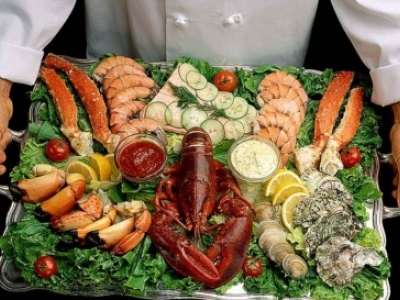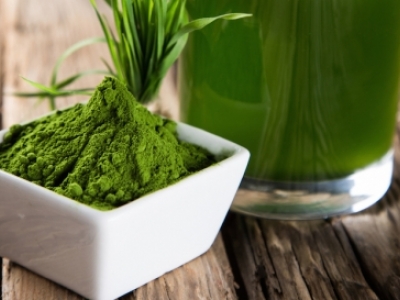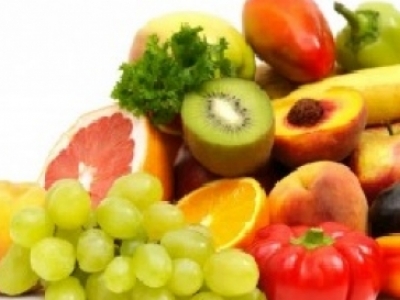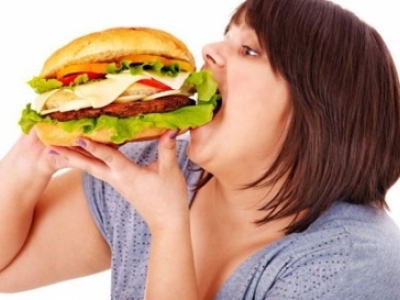Don't miss
Other articles
Almost everyone who has ever been to a cafe, restaurant, canteen at work or gastronomy was tempted by the appetizing look of steaming barbecue, lasagna, ice cream, and had to barely make a choice in favor of a particular dish.
What is so amazing about these blue - green algae and why is it firmly usurped the place of one of the most useful foods? DiningSmart team will gladly tell you all about it.
The daily requirement for vitamins is calculated in milli- or micrograms, butits contribution to our physical and mental well-being is enormous.
Scientifically, obesity – is a chronic disease characterized by excessive accumulation of body fat.
Mayonnaise: to eat or not to eat?
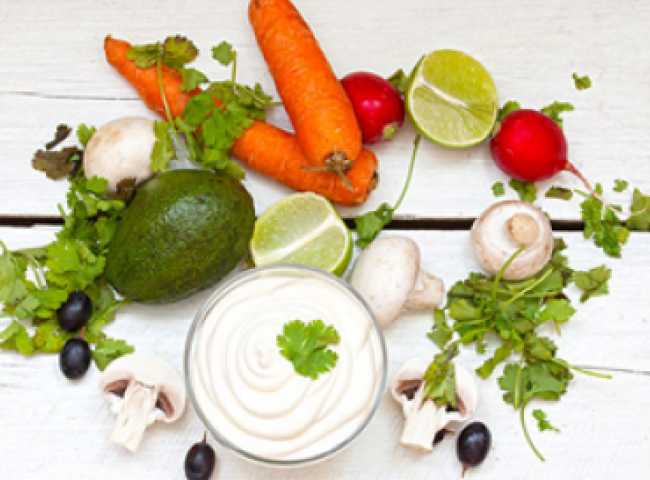
Mayonnaise is a cold sauce, made of olive oil, egg yolk, vinegar, flavoring, spices, sugar, mustard and salt.Famous for its very ancient history, mayonnaise finds it fansall over the world, competing with mustard, ketchup and soy sauce. The origin of the word "mayonnaise" in French is unknown. However Larousse Gastronomique(1961)claims that the word comes from the old French «moyeu», which means yolk.
There are several versions of the invention of mayonnaise.
The word mayonnaise is associated with the city of Maon -capital of the Spanish island, Menorca, which is part of the Balearic Islands. As stated in one of the French encyclopedic dictionaries, Maon was conquered by the Duke of Richelieu. In 1758, the British people laid siege to the city.The French people have exhausted stocks of food, except eggs and olive oil.Of these products, the chefs prepared eggs and omelets, with what the French officers were pretty fed up.The Duke of Richelieu ordered his cook to prepare some new dish. The chef whipped eggs with oil and added a salt and spices. So, he got the original sauce, named after the city.Initially sauce was named "Provencal sauce de Mayon", later it was changed into Mayonnaise Provencal. The other version is associated with the name of Louis Krilon.Being on the Spanish service, he conquered the city of Mahon – the capital of the Minorca Island. A banquet was organized in the honor of this event, where all were treated to a variety of dishes with sauce. This sauce was produced in Maon and was named Maon, which means mayonnaise in French. The sauce is quite ancient and there is a possibility that it arose independently in several places of the Mediterranean- where there is olive oil and eggs.  Traditional mayonnaise includes in it vegetable oil, egg yolk, vinegar and mustard. But the contemporary producers add many other ingredients. Black caviar, grated cheese, fresh herbs, chopped herring, salmon or any other fish can also be added into mayonnaise. The original recipe of mayonnaise is not suitable for long term storage and is not convenient for industrial production; therefore, receipts were developed for industrial use. It should be noted that this homemade mayonnaise is very different from the ones we find in the stores. Honestly, naming sauce production as “mayonnaise” is not right. The color, taste, smell and texture are different from the original one.Current regulations allow producers to add variousof food supplements (both natural and synthetic) to this product. In accordance with government standards, mayonnaise is a product, comprising of fat not less than 50% and egg products not less than 1.0%, and the fat content for mayonnaise sauce is at least 15%. In developed countries, the amount of fat in mayonnaise must be at least 80%, the rest is called mayonnaise salad dressing (there may be less fat and more water).
Traditional mayonnaise includes in it vegetable oil, egg yolk, vinegar and mustard. But the contemporary producers add many other ingredients. Black caviar, grated cheese, fresh herbs, chopped herring, salmon or any other fish can also be added into mayonnaise. The original recipe of mayonnaise is not suitable for long term storage and is not convenient for industrial production; therefore, receipts were developed for industrial use. It should be noted that this homemade mayonnaise is very different from the ones we find in the stores. Honestly, naming sauce production as “mayonnaise” is not right. The color, taste, smell and texture are different from the original one.Current regulations allow producers to add variousof food supplements (both natural and synthetic) to this product. In accordance with government standards, mayonnaise is a product, comprising of fat not less than 50% and egg products not less than 1.0%, and the fat content for mayonnaise sauce is at least 15%. In developed countries, the amount of fat in mayonnaise must be at least 80%, the rest is called mayonnaise salad dressing (there may be less fat and more water).
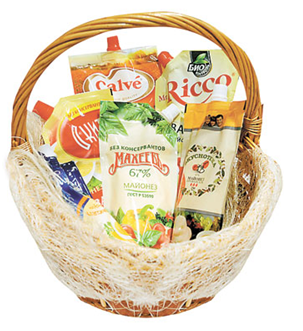
The use of industrial mayonnaise can harm health, as it contains a lot of preservatives and food additives and little natural oil and eggs, replaced with egg powder.In Russia Alexander KonstantinovichBaturin, deputy director of the Russian Nutrition Institute recommends: "While making vegetable salad, try not overusing the mayonnaise. Think of a dressing that will contain fewer calories and consist essentially of a vegetable oil. This will keep the original taste of the product. No matter what we prepare, when we use mayonnaise, we will feel the taste of mayonnaise, not the taste of the dish. And it concerns not only home-made dishes, but meals in catering: when ordering some beef a la francaise, it turns out that there is no meat at all, as it is covered in mayonnaise and cheese".
Mayonnaise is a cold sauce and it is not subjected to heat treatment. Mayonnaise inherently is emulsion which decomposes into components while heating. Why roasting meat with mayonnaise (marinating, such as kebabs in mayonnaise and other ways to use this sauce in hot dishes) was, is, and I think will be popular?Because the mayonnaise has the ability to impregnate the meat and the dish turns out juicy, but while cooking the real meat juices from the meat is replaced by the chemical components of mayonnaise.
Mayonnaise is very fat sauce, high-calorie varieties of mayonnaise contains 55 percent fat. But there is no protein in mayonnaise, essential for human body. There is usually a little less than one percent per 100 g of sauce. Do not forget that the calorie of vegetable oil, from which mayonnaise is made, tends from 900 kcal per 100 g plus additional ingredients. As a result, a small 200 gram pack of white sauce poured into a large salad bowl, add to its caloric content about 1200 kcal - half of the daily requirement of energy for human. Even a small portion of mayonnaise added to pasta or dumplings, increases calories by 100-150 kcal.
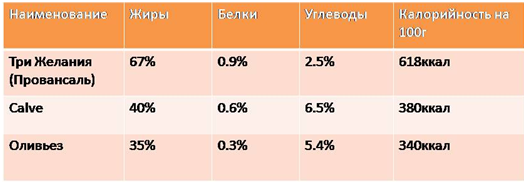
Focusing on the needs of people for low-calorie products, manufacturers started production of low-calorie mayonnaise with a fat content not exceeding 40 per cent. In such products, part of the vegetable fat and egg powder is replaced by water. Since water is not mixed with the fats, emulsifiers are added into the low calorie mayonnaises to achieve homogeneity of the sauce. Moreover, it requires additional flavorings and colorings.
If you cannot live without mayonnaise, choose the one on the shelves which is made according to the classic recipe and contains no additional preservatives, colors and flavors. And the better choice is to make it yourself. We offer you a recipe for tasty and healthy homemade mayonnaise from our reader - Valentina Vassilyeva.
“Once I decided to make own mayonnaise. Whipped in a blender 1 egg yolk, added sunflower oil in drops (ideally, olive oil is better), for one yolk you’ll need half a cup. I added all the spices to my own taste - salt, vinegar, mustard and pepper. As a result, I’ve got a 250 g jar of mayonnaise. Color, taste and smell are radically different from the store counterpart. It is understandable - without dyes, simulators, emulsifiers and addictive substances. If you have a mixer or a blender in your house making mayonnaise is all a piece of cake”.
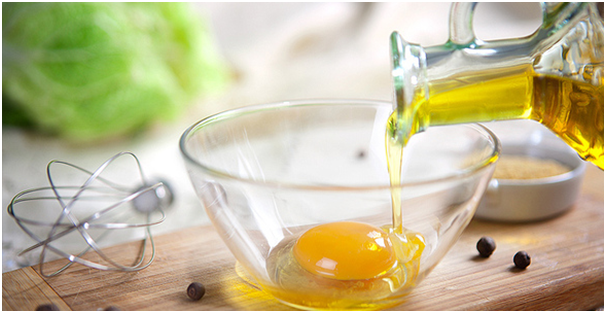
And here are some tips how to use mayonnaise different ways, which is very helpful!
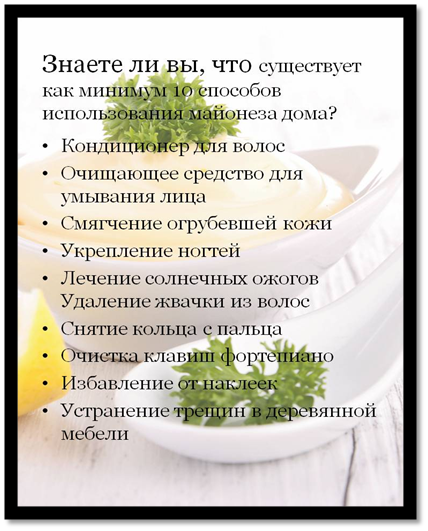
Other articles
Almost everyone who has ever been to a cafe, restaurant, canteen at work or gastronomy was tempted by the appetizing look of steaming barbecue, lasagna, ice cream, and had to barely make a choice in favor of a particular dish.
What is so amazing about these blue - green algae and why is it firmly usurped the place of one of the most useful foods? DiningSmart team will gladly tell you all about it.
The daily requirement for vitamins is calculated in milli- or micrograms, butits contribution to our physical and mental well-being is enormous.
Scientifically, obesity – is a chronic disease characterized by excessive accumulation of body fat.





